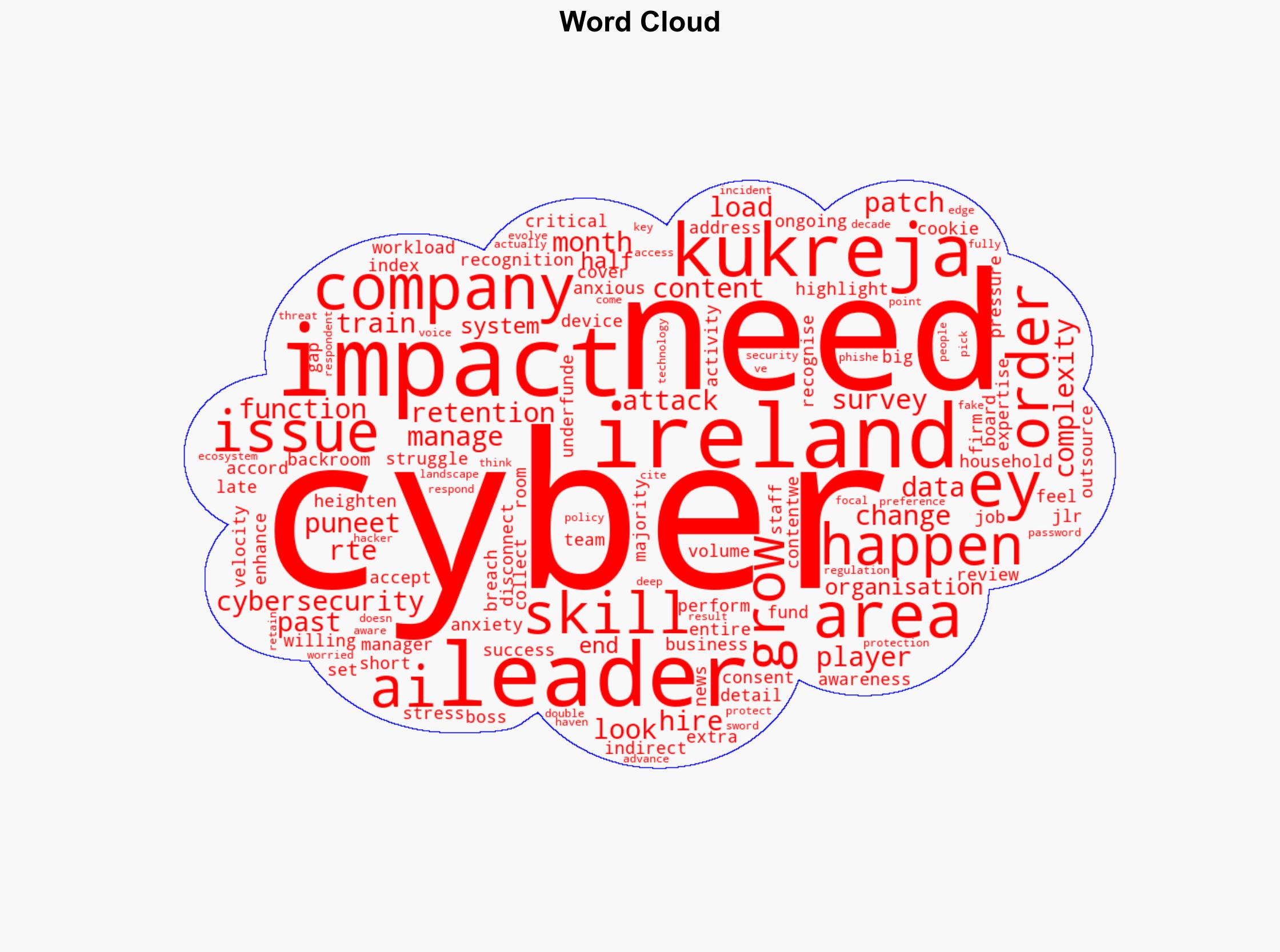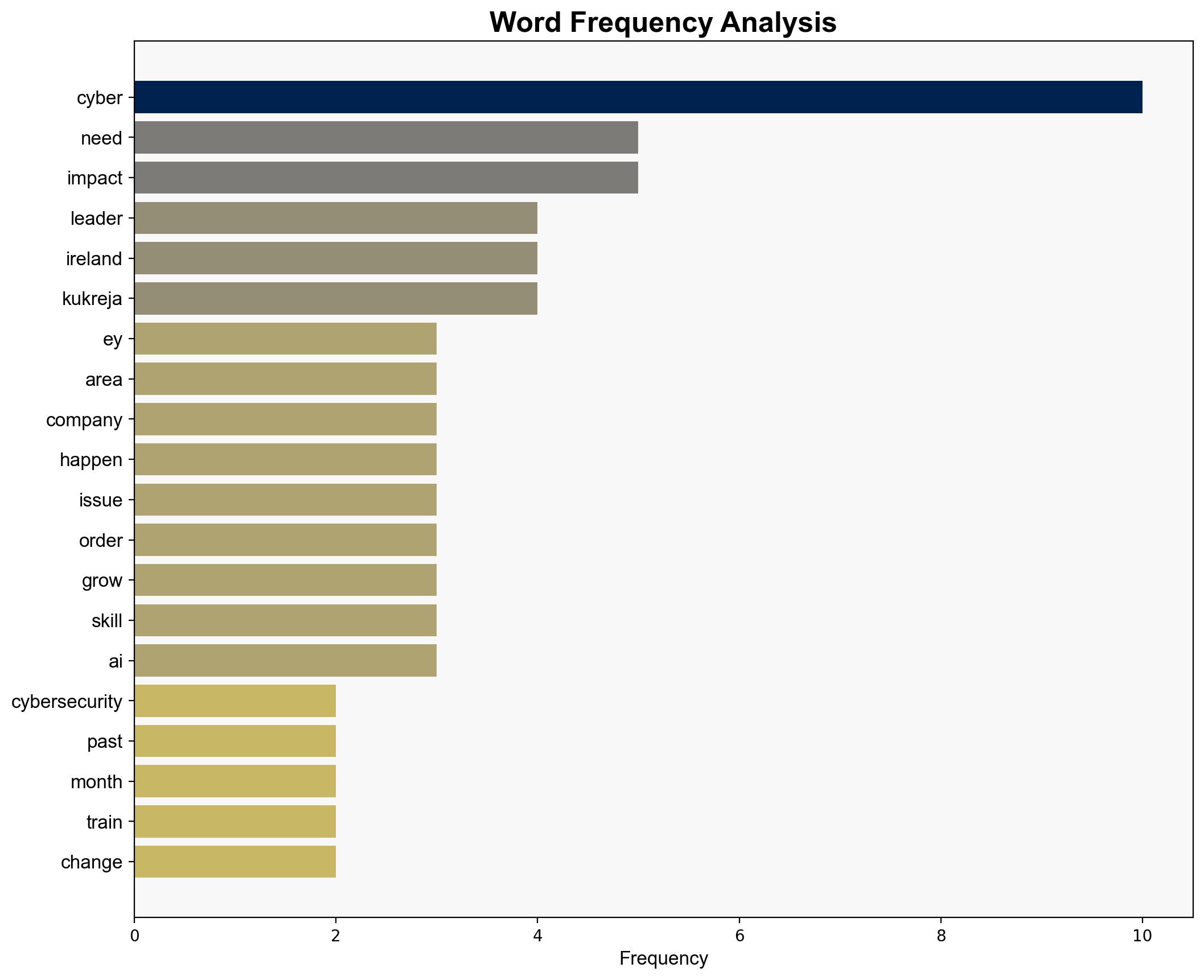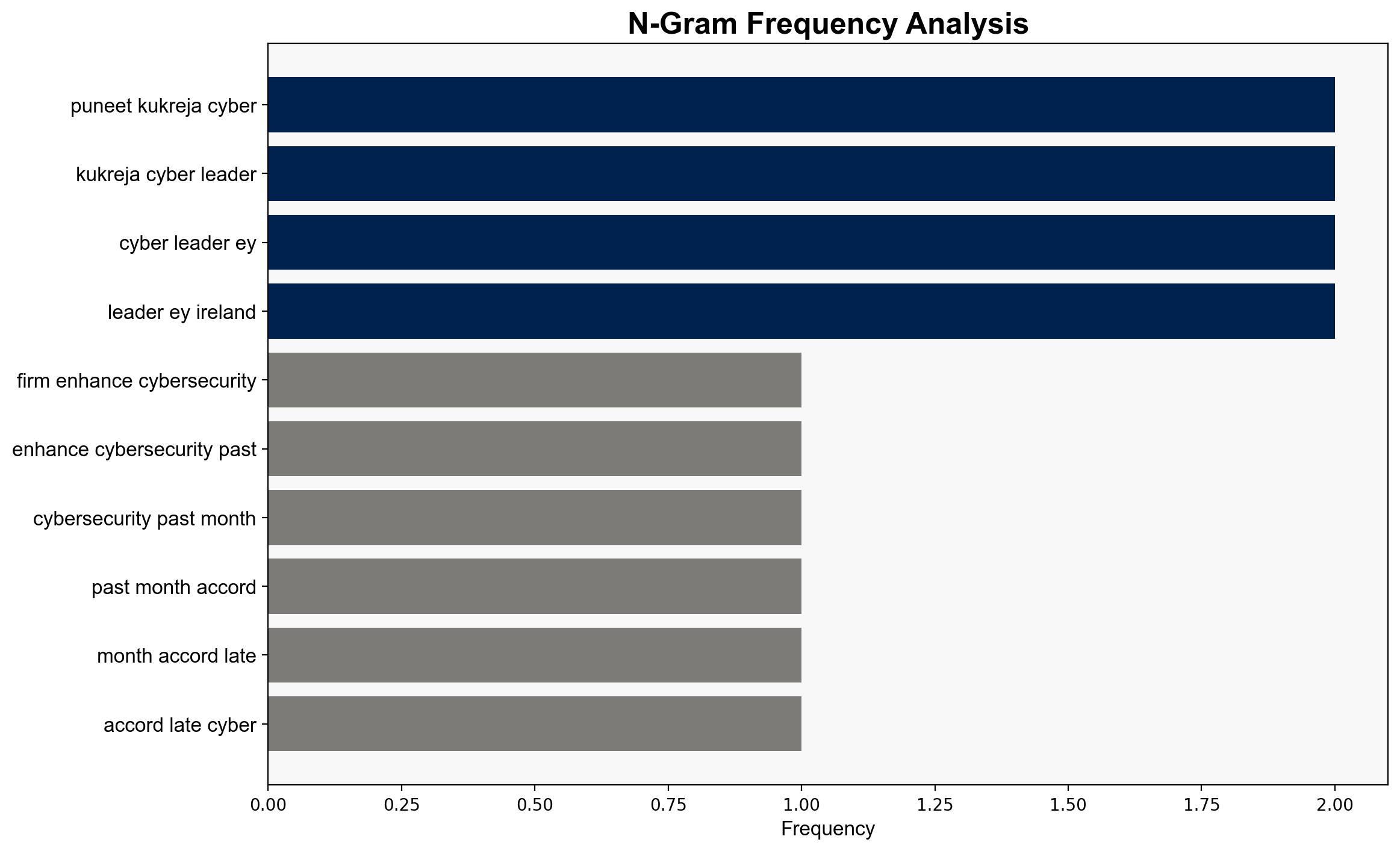Cyber leaders worried about budgets and burnout – survey – RTE
Published on: 2025-11-05
Intelligence Report: Cyber leaders worried about budgets and burnout – survey – RTE
1. BLUF (Bottom Line Up Front)
The most supported hypothesis suggests that underfunding and burnout among cybersecurity teams are leading to increased vulnerabilities in organizations, potentially escalating cyber threats. Confidence in this hypothesis is moderate due to the consistent reporting of budgetary constraints and workforce stress. Recommended action includes prioritizing resource allocation towards cybersecurity and enhancing workforce well-being to mitigate risks.
2. Competing Hypotheses
Hypothesis 1: Underfunding and workforce burnout are causing significant vulnerabilities in cybersecurity, increasing the risk of successful cyber attacks.
Hypothesis 2: The reported concerns are overstated, and organizations are adapting to cybersecurity challenges through outsourcing and technological advancements, maintaining adequate defense levels.
Using ACH 2.0, Hypothesis 1 is better supported. The survey data highlights consistent issues with funding and stress, while Hypothesis 2 lacks substantial evidence of effective adaptation strategies being widely implemented.
3. Key Assumptions and Red Flags
Assumptions:
– Organizations are not adequately funding cybersecurity efforts.
– Workforce burnout directly impacts cybersecurity effectiveness.
– Outsourcing is not sufficiently compensating for internal resource gaps.
Red Flags:
– Lack of specific data on the effectiveness of outsourcing.
– Potential bias in survey responses due to self-reporting.
– Absence of detailed information on technological advancements being implemented.
4. Implications and Strategic Risks
The ongoing disconnect between company leadership and cybersecurity teams could lead to increased cyber incidents, impacting economic stability and national security. The stress and burnout of cybersecurity personnel may result in higher turnover rates, exacerbating skill shortages. If unaddressed, these issues could escalate to more severe breaches, affecting critical infrastructure and public trust.
5. Recommendations and Outlook
- Increase budget allocations for cybersecurity to ensure adequate training and resources.
- Implement workforce well-being programs to reduce burnout and retain talent.
- Explore partnerships with cybersecurity firms to enhance defense capabilities.
- Scenario Projections:
- Best Case: Increased funding and improved workforce conditions lead to enhanced cybersecurity resilience.
- Worst Case: Continued underfunding and burnout result in significant breaches, affecting national security.
- Most Likely: Gradual improvements in funding and workforce conditions stabilize the cybersecurity landscape.
6. Key Individuals and Entities
Puneet Kukreja
7. Thematic Tags
national security threats, cybersecurity, counter-terrorism, regional focus





